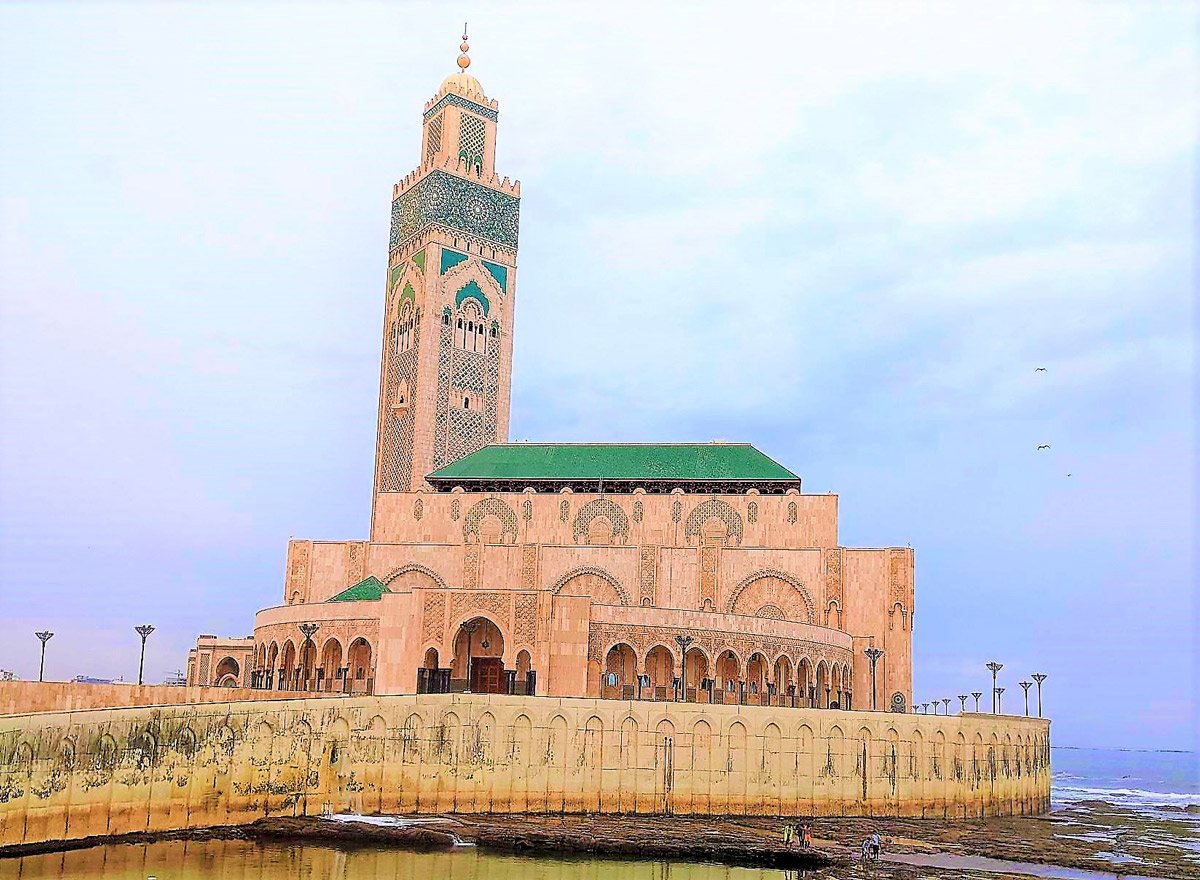The Beautiful Hassan II Mosque Brightens Casablanca and the Spiritual Life of its People – Casablanca, Morocco
What is It- Casablanca is the largest city in Morocco with a population of four million people and a major seaport. It serves as the financial, corporate, and international gateway of the country. Casablanca also has a fashionable beachfront boulevard called the Corniche and an abundance of buildings downtown featuring Art Deco, Moorish, and colonial architecture. Nevertheless, the city has had a mixed reputation over the years and had trouble attracting tourists.
The city’s reputation has improved significantly since the completion of the beautiful Hassan II Mosque in 1993. This modern structure conceived by King Hassan II was designed by a French architect and constructed on a prominent site over the shoreline by thousands of workers using an estimated $800 million in donations. The mosque, which also includes outbuildings used for religious studies, can accommodate 25,000 worshippers in the inside prayer hall and up to 80,000 people in the outside courtyard. It is the third largest mosque in the world after the ones in Mecca and Medina and ranks with the Sheik Zayed Mosque in Abu Dhabi as one of the most famous and ornate in the world.
Impressive Features- Some of the most impressive features of the mosque are the following:
Minaret – The minaret of the mosque towers 656 feet above the ground. It is the tallest structure in Morocco at least until the fifty-five story Mohammed VI Tower is the nearby city of Sale is completed. Visible throughout the city, the stylish minaret is decorated with mosaics and tiles. In addition, a laser is used at night to shine a beam towards Mecca.
Prayer Hall- The large prayer hall extends down the center of the building for more than the length of a football field. The walls feature domestic and Italian marbles that were hand carved into doorways and columns. The floor has heated glass in it that can be activated when required and is covered with red carpeting. Some glass areas contain views of the ocean below.
Dome and Roof – The ceiling of the prayer hall contains a large dome lined with cedar wood panels gilded with jewels and painted decorations. Above the prayer area are fifty-six glass chandeliers and a retractable roof that weighs 1100 tons. It opens to allow worshippers to see the stars at nighttime.
Doors and Fountains – There are huge bronze doors leading into the mosque and the complex contains dozens of fountains decorated with marble and granite columns.
Ablutions Rooms – The lower level of the mosque features special marble fountains and sitting areas where worshippers wash themselves prior to entering the worship areas in accordance with Islamic tradition. The platforms there resemble the structures often found in hammam baths in the Middle East.
Visiting the Mosque- The mosque is open to the public including non-Moslems for guided tours in different languages at 9, 10, 11 and 2 p.m. from Saturday to Thursday. It is closed on the holy day of Friday and there are limited hours during Ramadan. Both men and women are required to wear respectable clothing that covers the shoulders, chest, and knees.
When to Go - Casablanca has a temperate climate year-round affected by its location on the Atlantic Ocean. Daytime highs are in the seventies from May to November and in the sixties during the winter months. However, rain is more frequent and chilly days sometimes occur in winter and early spring. Fog and mist can occur in the morning before the sun breaks through.
Where to Stay - The Casablanca Four-Season Hotel is a four-star resort with many amenities and excellent views of the Atlantic Ocean beaches. It is located 2.5 miles to the west of the mosque.
How to Get There – The mosque is easy to find by traveling along the waterfront on the Boulevard de la Corniche. Local taxis and guides are readily available for assistance in visiting the mosque or arranging a tour.
Cost- The ticket price for a tour is about $13 per adult with lower rates for Moroccans, children, and students.







